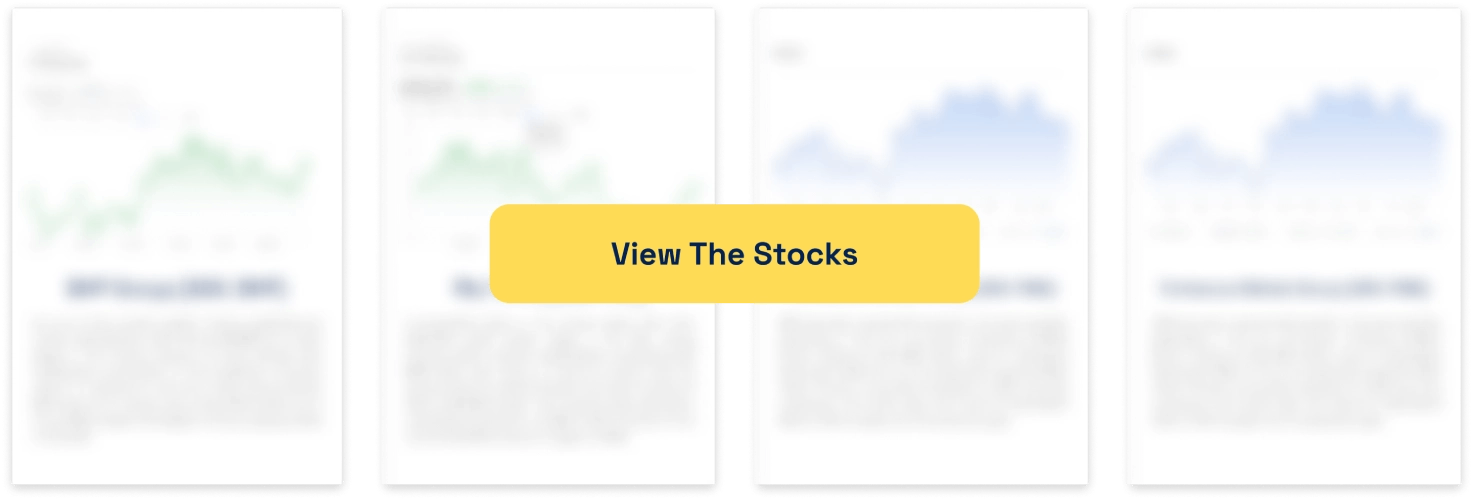Here’s why the Price to Book (P/B) multiple is so important to know if you own shares in the Big 4 Banks
![]() Nick Sundich, May 21, 2024
Nick Sundich, May 21, 2024
If you own shares ASX Bank stocks (especially the big Four), you need to know about the P/B multiple (Price to Book). In this article, we recap what it is and what is the magic figure that investors need to keep in mind.
So, what is the Price to Book (P/B) multiple?
The P/B multiple is the ratio of a company’s stock price to its book value per share, which is calculated by dividing the market capitalisation of a company by its total assets minus intangible assets and liabilities.
Why is it used to value banks?
The Price to Book (P/B) ratio is often used to value banks as compared to other multiples because of the unique business model of banks. It helps investors determine how much they are paying for a bank’s tangible assets such as cash and other financial instruments. Other multiples used to justify non-financial business’ performance may not be useful for banks. Take Enterprise Value to Earnings before Interest, Taxes, Depreciation and Amortisation (EV/EBITDA) for instance. EV/EBITDA wouldn’t make sense because Interest is the core of a bank’s earnings! On top of that, banks don’t typically have big Depreciation (of tangible assets) and Amortisation (of intangible assets) amounts in their P&L.
You also have to keep in mind that a bank’s assets may not always be readily converted into cash (at least not the sum of them). So when valuing banks, it is important to look at their tangible assets in order to understand their true worth.
What about P/E?
Hang on, what about P/E (Price to Earnings) – isn’t that useful? To some extent, certainly more than EV/EBITDA, but it still doesn’t tell the full story because earnings is only part of the equation when it comes to the stability of banks. P/E cannot accurately reflect the true value of a bank, as it cannot measure the potential value that lies in these physical assets such as loan and mortgage portfolios. Additionally, P/E ratio looks only at current dividend payments or expected future earnings, whereas P/B ratio looks at both these aspects in addition to taking into account the physical assets.
The P/B ratio allows investors to determine how the market perceives a particular bank relative to its book value, which is usually composed of hard assets such as deposits and loans. Furthermore, this ratio takes into account any liabilities that may be associated with a particular banking institution. By using P/B instead of other multiples such as EV/EBITDA, investors can better assess the value of a bank’s tangible assets and liabilities in order make informed investment decisions.
What are the Best ASX Financials Stocks to invest in right now?
Check our ASX buy/sell tips
1 is the magic number
When a bank has a P/B of 1, it means that the market price of its shares is the same as its book value. When it is greater than one, the price is greater than its book value. When it is less than one, the bank’s market price is lower than its book value. A P/B ratio of less than 1 could be an indication that the stock is undervalued and may be a good buying opportunity for investors. It may also be indicative of negative sentiment towards the company or sector, meaning that investors are wary about investing in the stock due to potential risks such as weak performance or poor management.
However, it should not be assumed that just because a bank has a P/B ratio of less than 1 that it is necessarily undervalued, as other factors such as quality of earnings and future growth prospects should also be taken into account before investing.
When it’s larger than 1
These principals apply vice versa when a bank’s P/B is greater than 1. This means that its market value is higher than the book value of its total assets. This could be an indication of the company’s potential for growth and profitability as the market is valuing the company more highly than what its assets are worth. In other words, investors are expecting the bank to generate greater profits in the future, which can be achieved through expansion and investments in new opportunities.
Alternatively, it could also be an indication that the stock is overvalued compared to its underlying fundamentals, meaning that investors may want to take caution when purchasing shares in this company.
The Price to Book (P/B) multiples of the Big Four Banks
Let’s start with the bank with the lowest multiple – ANZ, which is at 1.3x. This is calculated by a closing share price of $28.01 on May 15 2024 and a Tangible Book Value per share of $21.81 (derived from a book value of $65.5bn and just over 3bn shares on issue, or total shares).
Westpac follows with 1.5x. It had a closing share price on the aforementioned date of $26.60 and a tangible book value per share of $17.82 – based off of $61.8bn in tangible book value and 3.5bn shares on issue.
NAB is 1.9x with a share price of $34 and a book value per share of $18.21 (from $56.3bn in tangible book value and just under 3.1bn shares on issue).
Surprise, surprise…CBA is the largest at 3.1x. It has a share price of ~$119 and a tangible book value per share of $39.04 – derived from a tangible book value of $65.3bn and 1.67bn shares on issue. So now you know how analysts can say CBA could be ‘overvalued’ other than its share price (which is really only a function of its shares on issue and market capitalisation). Does it deserve to be 3.1x when the other banks aren’t over 2x? That’s a question analysts aren’t sure if they can affirm.
P/B is worth knowing, but not the be all and end all
On this basis of all this, investors might conclude that ANZ is the best opportunity just because it has the lowest multiple, although this is not necessarily the case. Investors need to consider why it is trading at the lowest multiple, taking into account other factors, including other trading multiples like the P/E multiple. And don’t forget what we noted above – that investors typically consider banks above 1x P/B as overvalued.
What are the Best ASX Stocks to invest in right now?
Check our buy/sell tips
Blog Categories
Get Our Top 5 ASX Stocks for FY25
Recent Posts
Your invitation to the Freelancer Investor Day
Your invitation to the Freelancer Investor Day Freelancer (ASX: FLN) is a Sydney-based company that has been the subject of…
Kamala Harris stocks: If Joe Biden’s VP wins the White House in 2024, which stocks will win?
With the US Presidential election now certain to be a Kamala Harris v Donald Trump showdown, we’ve looked at so-called…
South32 (ASX:S32): Is it the dark horse amongst ASX 200 miners or have cyclones and commodity prices hit it too hard?
South32 (ASX:S32) began life as a spinoff from BHP back in 2015, capitalised at $9bn. In mid-2024, it is capped…



